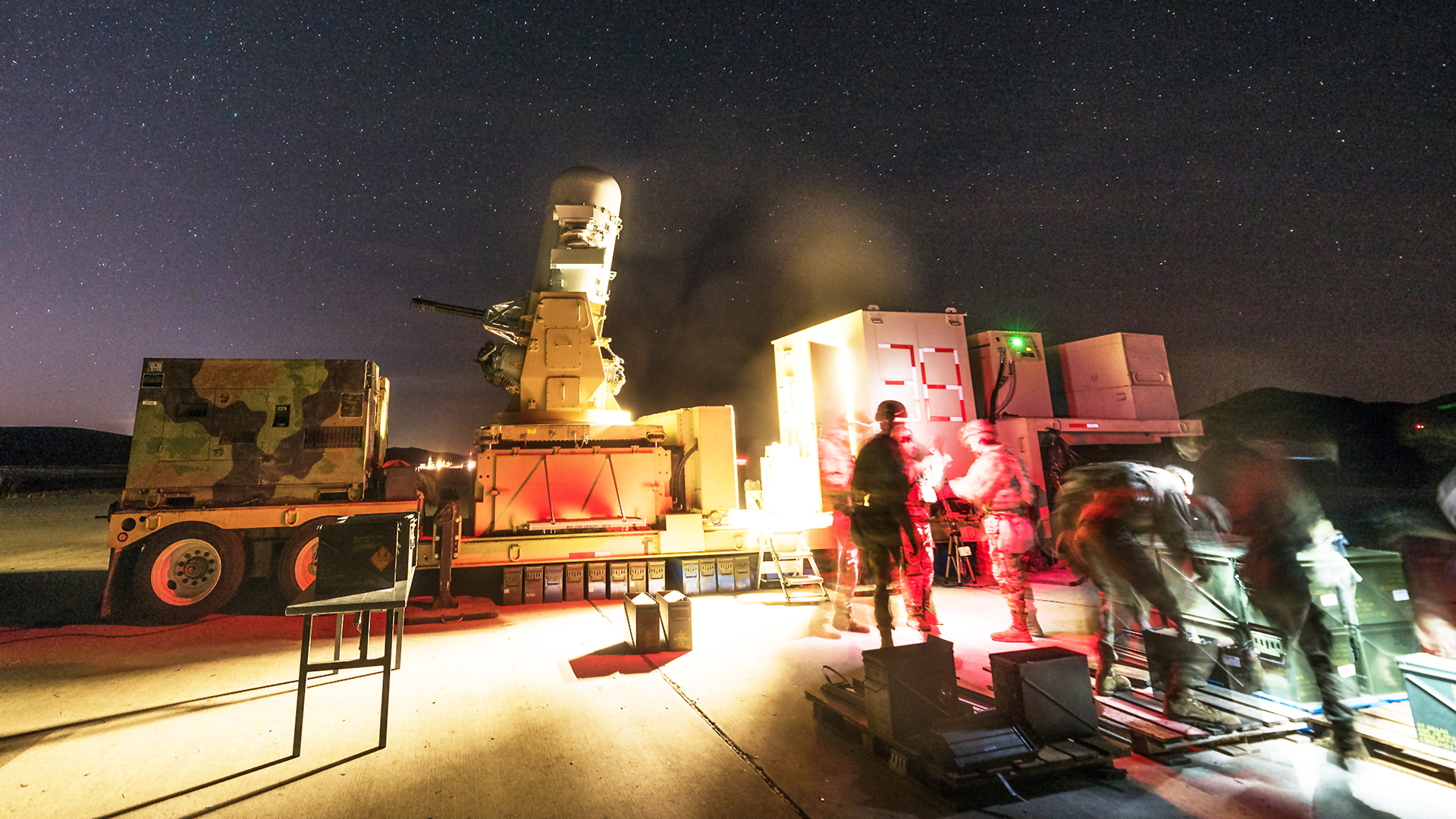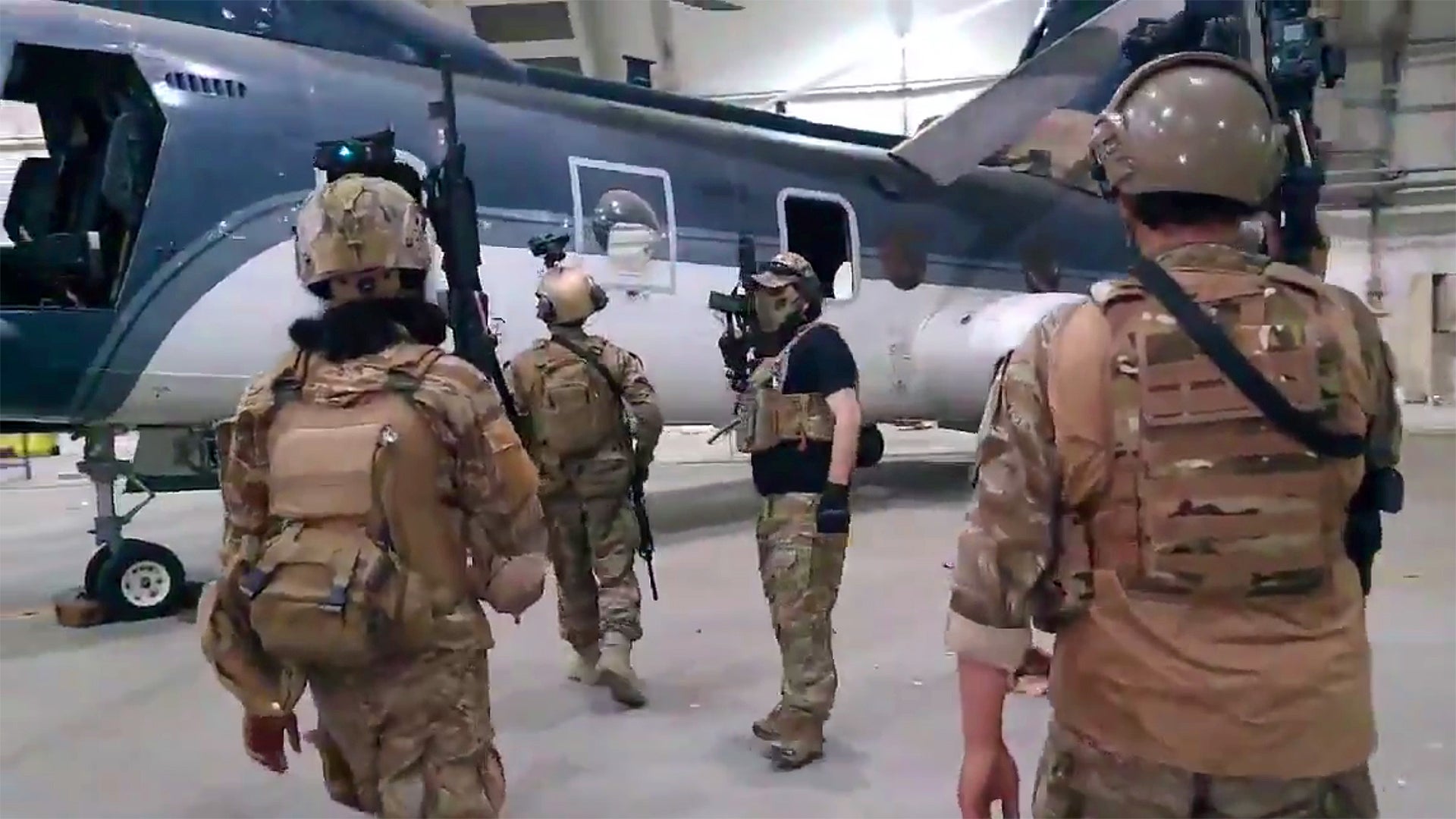The U.S. military has now withdrawn entirely from Afghanistan after nearly 20 years of operations in the country. As expected, at the very end, the U.S. military ensured that a variety of weapons and equipment, both American and that had belonged to the Afghan government, were destroyed or otherwise disabled. You can get up to speed on what is otherwise known about the final departure of U.S. forces in our report linked here.
At a press conference today, U.S. Marine Corps General Frank McKenzie, the head of U.S. Central Command (CENTCOM), said the following items had been “demilitarized” at Hamid Karzai International Airport in Kabul:
- At least two Counter-Rockets, Artillery, and Mortars (C-RAM) defense systems
- A total of 73 aircraft, including U.S. and Afghan airframes
- 70 Mine Resistant Ambush Protected (MRAP) armored trucks
- 27 Humvees

McKenzie didn’t elaborate on what had been done to any of these systems to render them unusable. The head of CENTCOM also did not name the type of C-RAM systems, which had been used to defend the Hamid Karzai International Airport against a rocket attack by the Afghanistan branch of ISIS just today. He also did not say specifically how many in total were there at the very end, though at least two were previously said to have been in place.
The Centurion, each of which costs around $15 million and that you can read more about here, is the only operational U.S. military C-RAM system at present. Individuals on the ground had reported hearing the characteristic sound of the Centurium’s 20mm Vulcan cannon during the recent rocket attack.
It is interesting to note that no pictures or videos have since emerged to independently confirm the presence of Centurions at Hamid Karzai International Airport. The New York Times
had also previously reported that a C-RAM system, likely another Centurion, had been disabled at the U.S. Embassy compound in Kabul when it was fully evacuated two weeks ago. The War Zone has reached out to the U.S. State Department to confirm that system was indeed rendered inoperable.
McKenzie did not provide any granular breakdown about the aircraft that were disabled at the airport, either, but he did say that some were already in a state of disrepair. This large total includes dozens of former Afghan Air Force aircraft.
Various new and old Afghan Air Force aircraft were at Hamid Karzai International Airport at the time of the final withdrawal, including more recent U.S.-supplied additions, such as A-29 Super Tucano light attack planes, C-130H Hercules transport aircraft, and UH-60 Black Hawk and Mi-17 transport helicopters. Other types that have been out of service for years, such as the L-39 armed jet trainers, three of which are seen in a picture in the Tweet below, were also still there.
There have been questions for some time about what steps the U.S. government might take to prevent fixed-wing planes and helicopters that had belonged to the Afghan military from falling into the Taliban’s hands. A picture is circulating online, which is seen in the Tweet below and may well be dated, shows an ex-Afghan Air Force UH-60 Black Hawk with smashed windows and holes cut in its main cabin doors. It also shows dog carriers, some with dogs inside, but it’s not clear what the ultimate fate of these animals might have been.
Of course, the Taliban has already captured a number of former Afghan military aircraft at other bases around the country. Afghan crews were also able to fly dozens of others out of the country, including into Uzbekistan, as you can read more about here.
Questions remain about how readily the Taliban might be able to utilize the more modern platforms it now possesses, such as the A-29s and UH-60s, as you can read more about here.
Video did appear earlier today purporting to show a Taliban-operated Black Hawk in flight. The clip shows an individual suspended by below for unclear reasons.
We also don’t know whether the 73 aircraft McKenzie mentioned included the seven CH-46E Sea Knight helicopters that the U.S. State Department said it had disabled in some fashion and abandoned at the airport in Kabul last week, but it likely does. The War Zone had been the first to report on that development. Video has now emerged that appears to have been shot by reporters on the ground and shows members of the Taliban, which are very well equipped, inspecting the disabled Sea Knights. Some people are misidentifying these helicopters as CH-47 Chinooks. It’s a sad end for the aircraft that were deeply renovated in the last decade and will now likely be used as Taliban trophies.
In their lightning-quick conquest of Afghanistan earlier this month, the Taliban also seized significant numbers of Humvees, as well as other vehicles, including MRAPs and pickup trucks, among many other things. Still, it makes good sense that the U.S. military would look to deny the group access to dozens more, especially if they were up to U.S. standards.
There was definitely other materiel that the U.S. military destroyed in place at the airport or otherwise disabled before the final withdrawal beyond what McKenzie mentioned at the press conference, as well. For example, we know that American troops broke down various Afghan small arms and light weapons.
It’s was largely expected that the U.S. military would leave behind at least some equipment, including certain higher-end systems, during the final withdrawal. Each one of the Centurions alone would have likely required a single C-17 to airlift it out and loading them onto the planes would have taken hours to do. During that window, the forces still at the airport in Kabul would have been without their protective umbrella, one that was needed just hours prior. As such, the call was made to leave the systems and quickly destroy their capabilities so that everyone could leave with as small a window of vulnerability as possible.
McKenzie did say that equipment “necessary for airport operations,” such as airport crash trucks and other civilian ground vehicles, were left intact for the Taliban. Getting the airport reopened is very important to the possibility of getting the hundreds of U.S. citizens left in the country out, as well as other foreign nationals and at-risk Afghans. That is if the Taliban really does allow it.
All told, a full accounting of everything that was abandoned in Kabul at the end, functional or not, is still yet to come.
We will update this story as more information becomes available.
You can find our follow-up coverage on what was left behind at Hamid Karzai International Airport here.
Contact the author: joe@thedrive.com
